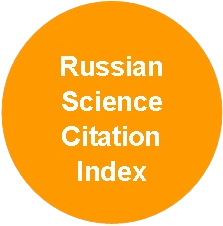Ecological-Cenotic Structure of the Relict Japanese Pine (Pinus × funebris Kom.) Grove in the Primorski Territory
DOI:
https://doi.org/10.37482/0536-1036-2025-2-112-127Keywords:
Pinus × funebris, Quercus mongolica, pine grove, degradation of pine forests, ecological monitoring, the Primorski TerritoryAbstract
The condition and ecological-cenotic (parcel) structure of a grove formed by the Japanese pine (Pinus × funebris Kom.) in the Primorski Territory (Ussuri District) are described. Such groves are the residual fragments of a relict pine formation unique not only for the Region, but also for Russia. They are confined to the dry slopes with southern exposures, which are subject to more frequent forest fires than other ecotopes. This creates a real threat of complete extinction of the relict pine forests. The problem of preserving the formation is consistent with the need to study the spatial (parcel) structure and monitor the state of pine cenoses. A sample plot has been laid out on the slope in the grove, where all the layers of vegetation cover have been described in detail and mapped at a scale of 1:100, followed by a pairwise comparison of schematic maps and allocation of parcels (as interpreted by N.V. Dylis). Detailed observations of the grove have been conducted since 1992. Extreme growing conditions have resulted in a low level of species richness of all communities on the studied and adjacent slopes. The composition of species in the lower layers of the pine grove and the oak forest that has replaced the pine one is the same and is represented by xerophytic flora. There are 2 species growing in the undergrowth of both forest types and 19 in the herbaceous layer. In 2003, 5 parcels have been identified in the grove: 3 with pine dominance (pine sedge one, pine sparsely-covered one, pine with oak forb-sedge one) and 2 with oak dominance (oak with pine (xerophytic) one and oak cow wheat-sedge one). The basis of the grove is a pine sedge parcel with the parent tree stand. The stand began to disintegrate in it, although it has not yet reached a mature age. By 2019, there have remained 4 parcels: due to the transition of pine undergrowth to the stand category, the area of the pine sparsely-covered parcel has distributed between adjacent parcels. The presence of trees of pine undergrowth in good vital condition in the “oak” parcels of trees or pine undergrowth allows us to assume a replacement of oak with pine in these parcels in the foreseeable future, provided there are no fires.
Downloads
References
Бобров Е.Г. Лесообразующие хвойные СССР. М.: Наука, 1978. 189 с. Bobrov E.G. Forest-Forming Conifers of the USSR. Moscow, Nauka Publ., 1978. 189 p. (In Russ.).
Будищев А.Ф. Описание лесов южной части Приморской области: сб. главнейш. офиц. докум. по управл. Вост. Сиб. Т. 5. Вып. 1: Леса Приамурского края. 2-е изд. Хабаровск, 1898. 488 c. Budishchev A.F. Description of Forests of the Southern Part of the Primorskaya Oblast: Collection of the Main Official Documents on Management of the Eastern Siberia, vol. 5, iss.1: Forests of the Amur Region. 2nd ed. Khabarovsk, 1898. 488 p. (In Russ.).
Васильев Н.Г., Колесников Б.П. Чернопихтово-широколиственные леса южного Приморья. М.; Л.: АН СССР, 1962. 146 с. Vasil’ev N.G., Kolesnikov B.P. Black Fir-Broadleaf Forests of Southern Primorye. Moscow, Leningrad, Academy of Sciences of the USSR Publ., 1962. 146 p. (In Russ.).
Витвицкий Г.Н. Климат // Южная часть Дальнего Востока. М.: Наука, 1969. С. 70–96. Vitvitskij G.N. Climate. Yuzhnaya chast’ Dal’nego Vostoka. Moscow, Nauka Publ., 1969, pp. 70–96. (In Russ.).
Галанин А.В. Ценотическая организация растительного покрова. Владивосток: ДВО АН СССР, 1989. 163 с. Galanin A.V. Coenotic Organization of Vegetation Cover. Vladivostok, Far East Branch of the Russian Academy of Sciences, 1989. 163 p. (In Russ.).
Дылис Н.В. Структура лесного биогеоценоза: докл. на XXI ежегодн. Комаровском чтении. М.: Наука, 1969. 55 с. Dylis N.V. The Structure of Forest Biogeocenosis: Report at the 21st annual Komarovsky Reading. Moscow, Nauka Publ., 1969. 55 p. (In Russ.).
Дылис Н.В. Структурно-функциональная организация биогеоценотических систем и ее изучение // Программа и методика биогеоценологических исследований. M.: Наука, 1974. С. 14–23. Dylis N.V. Structural and Functional Organization of Biogeocenotic Systems and its Study. Programma i metodika biogeotsenologicheskikh issledovanij. Moscow, Nauka Publ., 1974, pp.14–23. (In Russ.).
Ильченко Т.П., Лауве Л.С., Урусов В.М. Изменчивость сосны погребальной в Приморье в связи с особенностями климата // Редкие и исчезающие древесные растения юга Дальнего Востока. Владивосток, 1978. С. 28–44. Il’chenko T.P., Lauve L.S., Urusov V.M. Variability of the Japanese Pine in Primorye in Connection with Climate Features. Redkie i ischezayushchie drevesnye rasteniya yuga Dal’nego Vostoka. Vladivostok, 1978, pp. 28–44. (In Russ.).
Колесников Б.П. Растительность // Южная часть Дальнего Востока. М.: Наука, 1969. С. 206–250. Kolesnikov B.P. Rastitel’nost’. Yuzhnaya chast’ Dal’nego Vostoka. Moscow, Nauka Publ., 1969, pp. 206–250. (In Russ.).
Куренцова Г.Э. Растительность Приморского края. Владивосток: Дальневост. книжн. изд-во, 1968. 192 с. Kurentsova G.E. Vegetation of the Primorsky Territory. Vladivostok, Far Eastern Book Publishing House, 1968. 192 p. (In Russ.).
Москалюк Т.А. Парцеллярная структура сухих дубняков на юге Приморья // Биологические исследования на Горнотаежной станции: юбилейн. сб. науч. тр. ГТС ДВО РАН. Владивосток: ДВО РАН, 2002. Вып. 8. С. 162–202. Moskalyuk T.A. Parcel Structure of Dry Oak Forests in the South of Primorye. Biological Research at the Mountain-Taiga Station: Jubilee Collection of Scientific Papers of the Mountain-Taiga Station of the Far East Branch of the Russian Academy of Sciences. Vladivostok, Far East Branch of the Russian Academy of Sciences, 2002, iss. 8, pp. 162–202. (In Russ.).
Москалюк Т.А., Репин Е.Н. О мониторинге естественной динамики лесов Южного Приморья на примере соснового и дубового сообществ // Мониторинг растительного покрова охраняемых территорий Российского Дальнего Востока: материалы рабоч. совещ. Владивосток: БСИ ДВО РАН, 2002. С. 156–163. Moskalyuk T.A., Repin E.N. On Monitoring the Natural Dynamics of Forests in Southern Primorye Using Pine and Oak Communities as an Example. Monitoring the Vegetation Cover of Protected Areas of the Russian Far East: Proceedings of the Working Session. Vladivostok, Botanical Garden-Institute of the Far East Branch of the Russian Academy of Sciences, 2002, pp. 156–163. (In Russ.).
Назимова Д.И. Климатическая ординация лесных экосистем как основа их классификации // Лесоведение, 1995. No 4. С. 63–73. Nazimova D.I. Climatic Ordination of Forest Ecosystems as a Basis for Their Classification. Lesovedenie = Russian Journal of Forest Science, 1995, no. 4, pp. 63–73. (In Russ.).
Орлова Л.В. О сосне погребальной (Pinus funebris Kom., Pinaceae) // Turczaninowia. 1999. No 2 (2). С. 41–45. Orlova L.V. On the Japanese Pine (Pinus funebris Kom., Pinaceae). Turczaninowia, 1999, no. 2 (2), pp. 41–45. (In Russ.).
Петропавловский Б.С. Леса Приморского края: (Эколого-географический анализ). Владивосток: Дальнаука, 2004. 317 с. Petropavlovskij B.S. Forests of the Primorski Territory (Eco-Geographical Analysis). Vladivostok, Dal’nauka, 2004. 317 p. (In Russ.).
Распределение площади лесов и запасов древесины по преобладающим породам и группам возраста (01.01.2022) / Информация по форме открытых данных. Форма No 2-ГЛР // Информация о порядке предоставления сведений из гос. лесн. реестра Приморского края. Режим доступа: https://primorsky.ru/authorities/executive-agencies/departments/forestry/otkrytye-dannye-o-lesakh-i-lesnoy-promyshlennosti/index.php (дата обращения: 17.11.22). Distribution of Forest Area and Timber Stocks by Predominant Species and Age Groups as of 01.01.2021. Information on the Open Data Form. Form no. 2-GLR. Information on the Procedure for Providing Information from the State Forest Register of the Primorski Territory. (In Russ.).
Репин Е.Н. Сосна погребальная в лесных угодьях Горнотаежной станции ДВО РАН // Биологические исследования в естественных и культурных экосистемах Приморского края. Владивосток: Дальнаука, 1993. С. 82–91. Repin E.N. The Japanese Pine in the Forest Lands of the Mountain Taiga Station of the Far East Branch of the Russian Academy of Sciences. Biological Research in Natural and Cultural Ecosystems of the Primorski Territory. Vladivostok, Dal’nauka Publ., 1993, pp. 82–91. (In Russ.).
Справочник для таксации лесов Дальнего Востока / отв. сост. В.Н. Корякин. Хабаровск: ДальНИИЛХ, 1990. 526 с. Handbook for Forest Inventory in the Far East. Resp. comp. V.N. Koryakin. Khabarovsk, Far East Forestry Research Institute, 1990. 526 p. (In Russ.).
Сукачев В.Н. Основы лесной типологии и биогеоценологии. Л.: Наука, 1972. Т. 3. 543 с. Sukachev V.N. Fundamentals of Forest Typology and Biogeocenology. Leningrad, Nauka Publ., 1972, vol. 3. 543 p. (In Russ.).
Урусов В.М. География хвойных Дальнего Востока (Тихоокеанский институт географии ДВО РАН / Научный совет «Комплексные проблемы охраны окружающей среды и рационального использования природных ресурсов ДВО АН СССР»). Владивосток: Дальнаука, 1995. 251 с. Urusov V.M. Geography of Conifers of the Far East (Pacific Institute of Geography, Far East Branch of the Russian Academy of Sciences). Scientific Council “Complex Problems of Environmental Protection and Rational Use of Natural Resources of the Far East Branch of the USSR Academy of Sciences. Vladivostok, Dal’nauka Publ., 1995. 251 p. (In Russ.).
Урусов В.М. Сосны и сосняки Дальнего Востока. Владивосток: ВГУЭС, 1999. 386 с. Urusov V.M. Pines and Pine Forests of the Far East. Vladivostok, Vladivostok State University of Economics and Service, 1999. 386 p. (In Russ.).
Урусов В.М., Варченко Л.И., Врищ Д.Л., Прокопенко С.В., Чипизубова М.Н., Петропавловский Б.С. Владивосток – юг Приморья: вековая и современная динамика растительности. Владивосток: Дальнаука, 2010. 420 с. Urusov V.M., Varchenko L.I., Vrishch D.L., Prokopenko S.V., Chipizubova M.N., Petropavlovskij B.S. Vladivostok – the South of Primorye: Secular and Modern Dynamics of Vegetation. Vladivostok, Dal’nauka Publ., 2010. 420 p. (In Russ.).
Уткин А.И. Методика исследований первичной продуктивности лесов // Биологическая продуктивность лесов Поволжья. М.: Наука, 1982. С. 59–71. Utkin A.I. Methodology for Research of Primary Forest Productivity. Biological Productivity of the Volga Region Forests. Moscow, Nauka Publ., 1982, pp. 59–71. (In Russ.).
Харкевич С.С., Качура Н.Н. Редкие виды растений Дальнего Востока и их охрана. М.: Наука, 1981. 234 с. Kharkevich S.S., Kachura N.N. Rare Plant Species of the Far East and Their Protection. Moscow, Nauka Publ., 1981. 234 p. (In Russ.).
Шишкин И.К. Сосна (Pinus funebris Kom.) на юге Уссурийского края // Вестн. ДВФ АН СССР. 1933. No 1–3. С. 29–42. Shishkin I.K. Pine (Pinus funebris Kom.) in the South of the Ussuriland. Vestnik Dal’nevostochnogo otdeleniya Akademii nauk SSSR, 1933, no. 1–3, pp. 29–42. (In Russ.).
Chai Z., Sun C., Wang D., Liu W., Zhang C. Spatial Structure and Dynamics of Predominant Populations in a Virgin Old-Growth Oak Forest in the Qinling Mountains. Scandinavian Journal of Forest Research, 2017, vol. 32, iss. 1, pp. 19–29. http://dx.doi.org/10.1080/02827581.2016.1183703
Kato J., Hayashi I. Quantitative Analysis of a Stand of Pinus densiflora Undergoing Succession to Quercus mongolica ssp. crispula: II. Growth and Population Dynamics of Q. mongolica ssp. crispula under the P. densiflora Canopy. Ecological Research, 2006, vol. 22, iss. 3, pp. 527–533. https://doi.org/10.1007/s11284-006-0046-4
Kolobov A.N., Frisman E.Ya. Evaluate the Initial Spatial Structure and Heterogeneity of the Composition for Spruce and Larch Stands on Real Data Self-Thinning of Even-Aged Stands. Ecological Complexity, 2018, vol. 34, pp. 89–99. https://doi.org/10.1016/j.ecocom.2017.09.005
Krejzar T. UN Strategic Plan for Forests 2017–2030. Preparations of UNFF-12 Session. Available at: https://unece.org/fileadmin/DAM/timber/meetings/20170329/5-UNFF_Strategic_Plan_on_forests_and_Preparations.pdf (accessed 26.06.2022).
Mestre L., Toro-Manríquez M., Soler R., Huertas-Herrera A., Martínez-Pastur G., Lencinas M.V. The Influence of Canopy-Layer Composition on Understory Plant Diversity in Southern Temperate Forests. Forest Ecosystems, 2017, vol. 4, iss. 6. 13 p. https://www.sci-hub.ru/10.1186/s40663-017-0093-z
Song U. Forest Litter and Shrubs Act as an Understory Filter for the Survival of Quercus mongolica Seedlings in Mt. Kwan-ak, South Korea. Scientific Reports, 2019, vol. 9, art. no. 4193. https://doi.org/10.1038/s41598-019-40624-4
Spicer M.E., Mellor H., Carson W.P. Seeing beyond the Trees: a Comparison of Tropical and Temperate Plant Growth Forms and Their Vertical Distribution. Ecology, 2020, vol. 101, no. 4, art. no. e02974. https://doi.org/10.1002/ecy.2974













